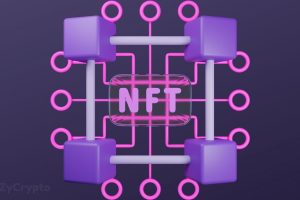NFT Is Coming to Bitcoin, And Not Everyone Seems Happy

A potpourri of reactions continues to fill the Bitcoin community following the launch of Ordinals, an NFT-like protocol, on the Bitcoin blockchain. Ex-Bitcoin developer, Casey Odarmor, made public the release of Ordinals in a January 21st blog post titled “Inscribing Mainnet,” sparking criticisms from a sector of Bitcoin maximalists who perceive the development antithetical to the core values of the network.
According to Odarmor, Ordinals is a protocol that assigns trackable serial numbers to satoshis (the smallest unit value of a Bitcoin). These satoshis can then be added to digital assets like video or audio and stored in a Bitcoin transaction system through a process called inscription. Odarmor says his work was borne out of the inspiration to “create something that would strike people as being Bitcoin native – not as a sidechain and without a token.
No to Bitcoin NFTs
The release of Ordinals, however, struck the wrong chords among many. Chief among criticisms for the project is its potential to abuse the network and populate its block size with financially irrelevant storage – something remotely sacrilegious to pro-Bitcoiners who want the apex blockchain to maintain its financial purity.
Though not the first time NFTs have been tried on the blockchain, the argument against onboarding other blockchain users to protect bitcoin’s sole financial purpose dates back to 2010, when a proposal to implement a domain name system (DNS) was rejected by Satoshi and a number of other core developers. Satoshi had argued that: “piling every proof-of-work quorum system..into one dataset doesn’t scale.” In reference to the potential memory usage, he added that users “shouldn’t have to download all of both to use one or the other.”
Yes, to Bitcoin NFTs
For Bitcoiners who love NFTs, Ordinals is a brilliant idea. Having an NFT that enjoys the full benefit of the Bitcoin network appears exciting. Pro-bitcoiner, Dan Held, was one of the first to analyse the benefits, stating it would “drive the demand for blockspace and bring more financial use cases to Bitcoin.”
Bitcoin needs fees to incentivize miners and survive, and the creation of more blocks through NFTs protocols, like Ordinals, can help boost more activities on the platform. Given that the current network version cannot tell inscribed and non-inscribed Satoshi’s apart, Ordinals have built an external software to verify them.
Back in August 2022, Ordarmor disclosed that a part of the motivation to create Ordinals was to bring the meme culture into Bitcoin.
Bitcoin expanded its block size limit in 2021 from 80 megabytes to a hypothetical 4 gigabytes following the Taproot upgrade. This opened the way for innovations like Ordinals.
Source: Read Full Article
